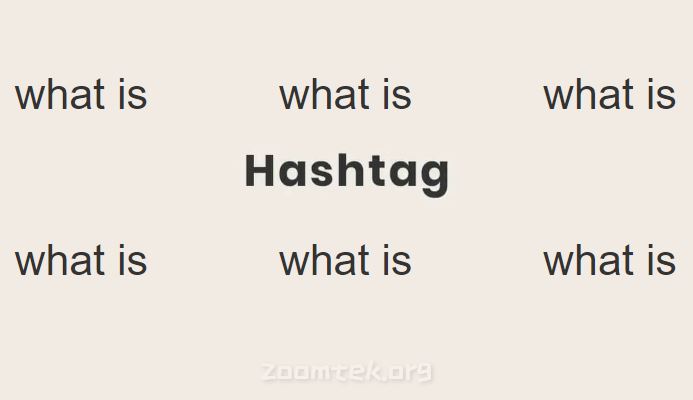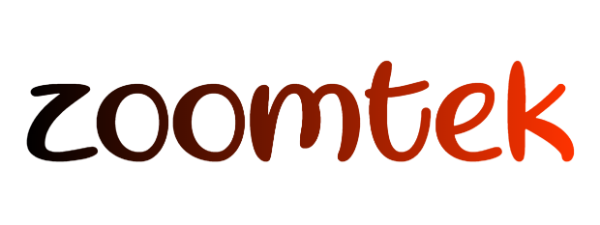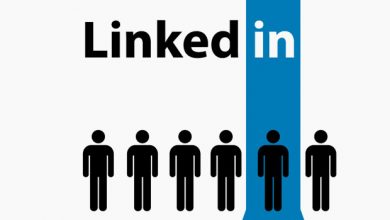What is a Hashtag and How to Use it?

Nowadays, the hashtag is one of the most widely used tools of interaction in social networks, which has many different uses, a sign that is more than a decade old.
What is hashtag ?
If you are a user of social networks or even work on microblogging websites, you must be familiar with the hashtag or #. This mark is placed in the category of metadata tags for the content category, whose history of introduction and fame belongs to Twitter. In short, the hashtag can be considered a tool for grouping content published on various platforms. By following hashtags, users can follow their favourite topics and discussions on social networks and other services.

To use a hashtag, you only need to put the # sign before each word or phrase without a space character. Hashtag supports all characters of numbers, letters, and spaces. Today, various social networks, in addition to the possibility of searching among hashtags, also allow the user to follow them. Today, we see the widespread use of hashtags in major social networks such as Twitter, Instagram, Facebook, YouTube, and Reddit, and some of them have even been forced to limit the use of hashtags in users’ posts.
2018 statistics show that 85% of the top 50 websites on the Internet use hashtags. Teen and young users, politicians, influencers, and famous personalities of the Internet world use hashtags the most. Of course, the use of hashtags among social, political, and human rights activists who carry out their information campaigns with particular hashtags should not be neglected.
History of hashtag
The hashtag was first introduced on Twitter on August 23, 2007, by a programmer and supporter of the open source movement named Chris Messina. Before that, the # symbol had been used for a variety of purposes on the Internet, which made it easier for Messina to formulate a proposal for Twitter. When he submitted his proposal to Twitter, he was inspired by previous uses of the mark on the Internet. Among the famous users of the # sign at that time, we can mention the Jaiku social network, which Messina had referred to in his proposal.
When Chris Messina suggested using hashtags on Twitter, he also mentioned tagging on Flickr. However, the initial reaction of Twitter to Messina’s proposal was not positive. They told him that such applications are more useful for Nerd users and that the community users will not have a good reception of the hashtag. The mass fires that occurred in October 2007 in San Diego were an excellent event to promote the use of hashtags. A tag called Sandie to go fire was created on Flickr to publish photos related to the fire, which Messina suggested that Twitter users use as a hashtag.
Despite many efforts, Messina had a difficult path in adding hashtags to Twitter. In those years, it was a feature similar to creating groups on Twitter, which, from Messina’s point of view, was not suitable for the intended purposes of the hashtag. To illustrate the effectiveness of hashtags, he gives the example of sending news and reports of special events to interested audiences. Finally, Messina published a comprehensive blog post explaining his proposal. Many of today’s uses and capabilities of the hashtag were in Messina’s blog post, and many of his suggestions were not implemented or did not last long.
Although hashtags have become inseparable members of the world of social networks, especially Twitter, in the early years, they were not well received. Messina says that even at first, some users hated the hashtag and did not understand why they used it in the posts. Among the many reasons for hating hashtags, we can mention their appearance. Finally, the hashtag proposal was implemented on Twitter and gradually made its way to other social networks and platforms. Perhaps the best reason for the finalization of the hashtag proposal can be seen in the executive policy of the founders of Twitter, who, in the early days and years of the platform’s development, gave great importance to the suggestions made by users.
How to use hashtags?
You must know its basic rules and structures if you want to use hashtags on social networks or other platforms. The first point you should know is that it is forbidden to use spaces in hashtags. In English hashtags, multi-word phrases are generally joined together and separated by capital letters (for example, #BlueJasmin). Using capital letters does not affect the search result of a hashtag.
For Persian hashtags consisting of several words, it is recommended to use a hyphen instead of a space (for example, #technology). Numbers are also supported in hashtags, but some special symbols such as percentages are not supported in hashtags.
When using hashtags in social networks, you should also consider the difference with the @ symbol. The @ sign is used to r to a user’s username in the desired social network, while the hashtag categorizes the content in the user’s selected group. Additionally, hashtags do not have any restrictions or a predetermined and standard list. Any phrase written with high standards and followed by a # symbol in the social network creates a new hashtag or places your content in a hashtag that may already exist.
“It is not possible to use spaces in hashtags in any social network.”
Currently, most major social networks, from Twitter and Instagram to Facebook, YouTube, and Pinterest, support hashtags. Maybe some of them have restrictions regarding using hashtags in each post, but the primary function of hashtags is to categorize content in all networks and microblogs.
In terms of the usual number of hashtags in a post, one to three hashtags can be suggested for all social networks. Statistics show that posts with more than this number of hashtags generate less interaction and interest in the network. Today, some social network users think that by writing multiple hashtags and placing content in different categories of a social network, they will attract more fans. In contrast, social network content with a lot of hashtags is not attractive at all for many users and is even repulsive.
Using hashtags in business and marketing
In order to have an effective and professional presence in social networks, businesses should definitely use the most popular tools of the networks, namely hashtags. Today, almost all large businesses are active in major social networks such as Twitter and Instagram and use them as channels for attracting customers. If you decide to use the hashtag as a tool to attract more users, keep some things in mind:
Use relevant hashtags: Before using hashtags in your posts, find popular hashtags in your industry. In fact, you need to check your competitors’ accounts to find the most popular hashtags in your industry. With such an approach, your content will appear in the search results of users interested in the industry and, as a result, potential customers.
Following trends: Hot topics in social networks, especially Twitter, are displayed as hashtags in the highest search list of users in each region. In your daily activity on social networks, look for hot topics and so-called trends and participate in discussions related to them. Of course, participating in discussions unrelated to business is not recommended. In other words, you should primarily look for hashtags in the popular culture category and avoid participating in discussions related to political hashtags.
Creating a proprietary hashtag: Creating a proprietary hashtag is similar to purchasing and developing a company’s proprietary domain. Develop a unique hashtag for your brand and promote it to encourage users to use the hashtag to participate in brand-related discussions. You can have a variety of hashtags for your business to publish content related to any business topic.
Create a buzz: Contests, festivals, and events are among the most used marketing tools. Promote these events with a unique hashtag on social networks that includes your brand. By encouraging users to use hashtags, you’re still helping your brand.
Today, hashtags are the central and vital tools in the world of social networks. Using them and getting familiar with their conventional structure, in addition to improving the user experience in networks, also leads to better marketing and advertising results. Finally, we emphasize again that the use of hashtags should not be excessive so that the marketing tool does not destroy the user experience.
Hashtag Finder
You can use the following website to find hashtags. Just enter your competitor’s ID on this site to find your competitor’s hashtags for you :






